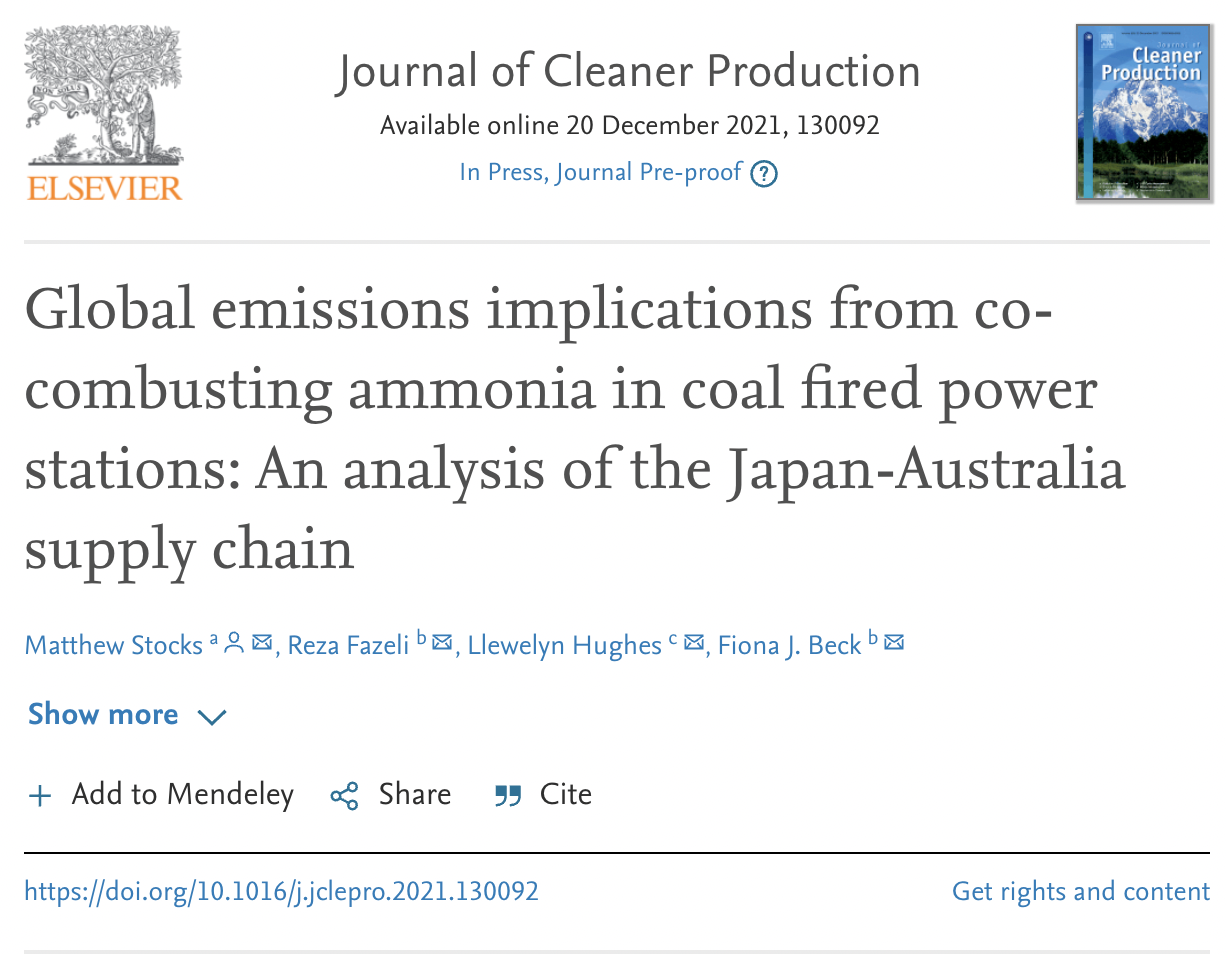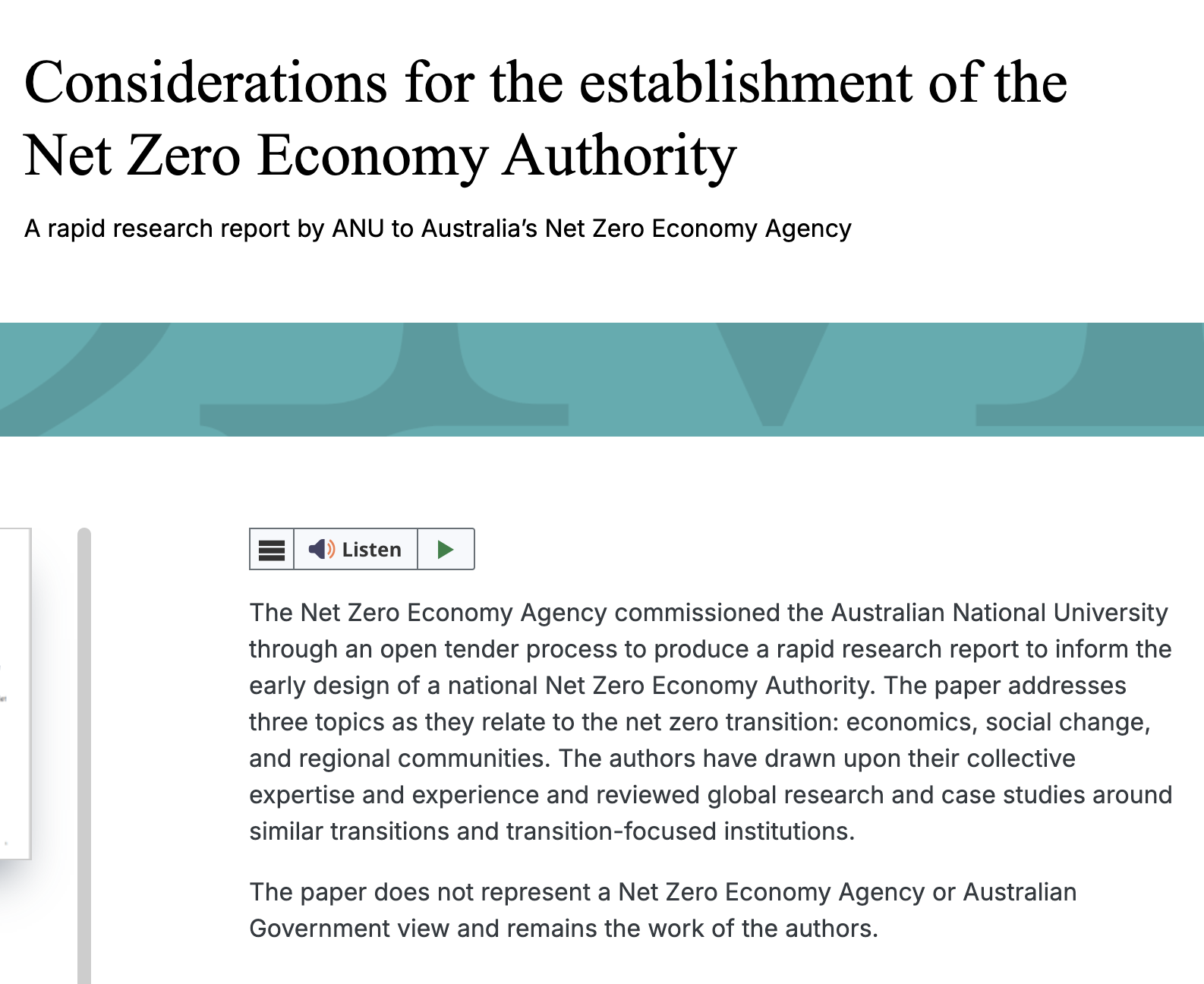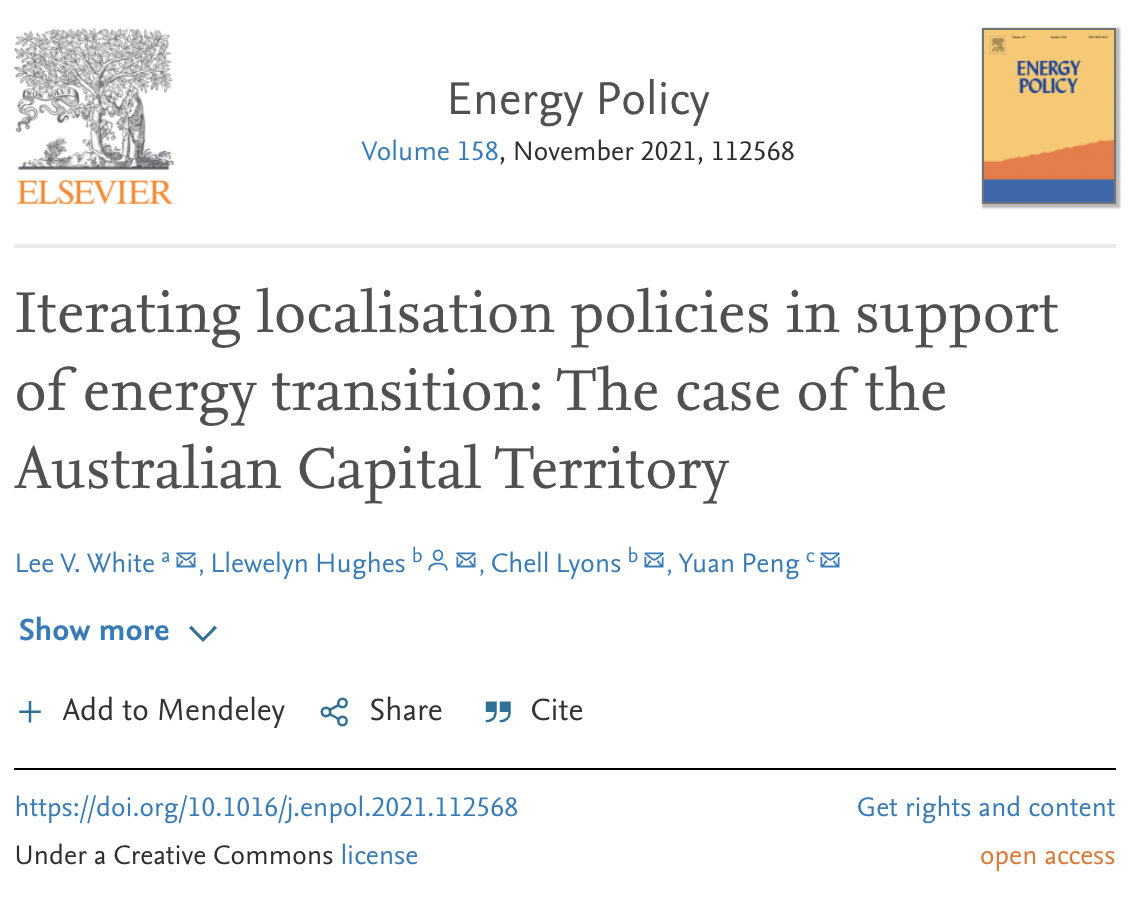Below are links to some recent publications. A full publication list is available here.

The Productivity Commission has contributed to the debate by noting that designing and implementing good policy is hard. Caution is important. But so is seizing the moment, as governments and industry scramble to benefit from the transition to low carbon economies.

We assess the potential application of IAMs to the practice of strategic foresight in long-term national security strategy. We propose that IAMs are a potentially useful additional tool as an input for considering the implications of decarbonisation trajectories in the Indo-Pacific. We pay particular focus to testing the implications of assumptions about the availability and costs of different technologies on the composition of energy supply and demand in the region.

This study assesses key barriers to offshore wind power (OWP) development in Vietnam and policy options for the development of the sector. A survey of 39 experts from government agencies, research institutions, industry, and civil society plus 22 follow-up interviews were conducted over January–September 2021, coupled with a broader analysis of key barriers and policy options.

This study considers the emissions implications of co-combusting imported ammonia in coal-fired power stations. The results show co-combustion of ammonia produced with SMR-HB provides no net benefit for the combined country emissions, as ammonia production related greenhouse emissions in Australia are equivalent to the emission reductions in Japan.

The Net Zero Economy Agency commissioned the Australian National University through an open tender process to produce a rapid research report to inform the early design of a national Net Zero Economy Authority. The paper addresses three topics as they relate to the net zero transition: economics, social change, and regional communities.

The world will recover from the pandemic. But in the longer term, coal in Japan faces even stiffer headwinds – not least market competition and increasing renewables from offshore wind and other technologies. This creates real questions about the appetite of Japanese companies to wage the increasingly risky bet that coal-fired power represents.

We consider the possibility of combining offshore wind with hydrogen production in the Australian context. A model is developed to represent an off-grid system powered by offshore wind and solar photovoltaics, with electrical storage providing balancing. The model optimizes generation, storage and electrolyser capacities to find the least-cost solution for hydrogen production under specified constraints.

This article argues that Swiss trading houses are part of the private governance arrangements that emerged in response to the wave of nationalization sweeping across the world’s prime oil producers. As the global crude supply chains deverticalized following nationalization, companies created mechanisms to manage the problems of price-setting, and matching suppliers and consumers.





















